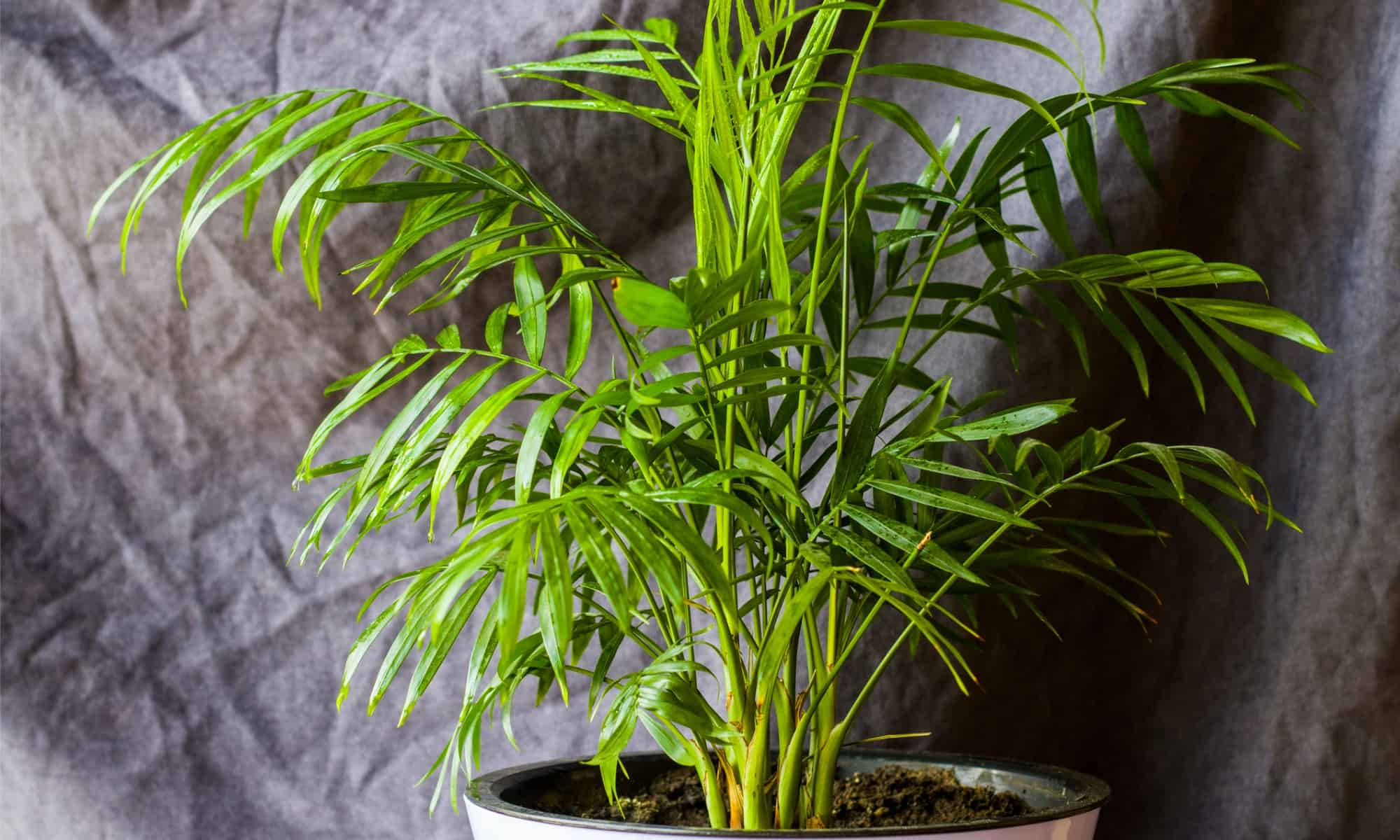Palm trees have a certain laidback, tropical vibe. These trees remind us of warm weather, sea breezes, and sandy beaches. It’s not surprising that many growers want to bring a little piece of the tropics to their homes by planting palm trees. But what about growers in cold weather regions such as Maine? Is it possible for Mainers to also enjoy palm trees? Yes…and no. Let’s clear up the confusion.
Plant Hardiness Zones
There are around 2,600 species of palm trees, many of which are native to the Caribbean, South America, and Asia. Some thrive in coastal areas. Others grow in deserts. But one thing that most palm trees have in common is they need warm weather.
There are so-called “cold-weather palm trees,” but one look at their recommended USDA plant hardiness zones will tell the true story. Most cold-weather palms are only hardy down to Zone 9. For perspective, most of central Florida lies in Zone 9. No one in their right mind considers Florida a cold-weather state, but many palm trees can’t take anything colder than a central Florida winter.
A very small handful of palm trees can tolerate colder weather than this. Some are hardy to Zones 7-8. A few individual trees may be cold-tolerant down to Zone 6, but these trees are very rare exceptions. Simply put, palm trees do not like cold climates.
Maine’s hardiness zones range from Zone 3b to a few very small pockets of Zone 6a along the southern coast. Most Mainers live in Zones 4a-5b. Winter temperatures consistently dip below 0°F in these zones. Temperatures from -10°F to -30°F are not uncommon. Palm trees are simply not going to survive the brutal Maine winters. But all hope is not lost for Maine’s palm tree lovers!

Most palm trees can’t survive in weather colder than that of central Florida.
©Arina P Habich/Shutterstock.com
Container Palms
For growers in such cold climates, a container palm is a great option. These trees are grown inside, protected from winter’s chill. But on warm summer days, they can be moved outside to bask in the sun.
Most palm trees are not candidates for container growing. You probably don’t have the space for an 80-foot-tall palm tree in your living room, for example. But there are a few small options that make wonderful container trees.

A few palm species are well-suited for container growing.
©iStock.com/Wheatfield
Parlor Palm (Chamaedorea elegans)
Parlor palms are one of the easiest palm trees to grow indoors, hence its name. These trees are native to southern Mexico and Guatemala, but they have become one of the most popular indoor palms in the world.
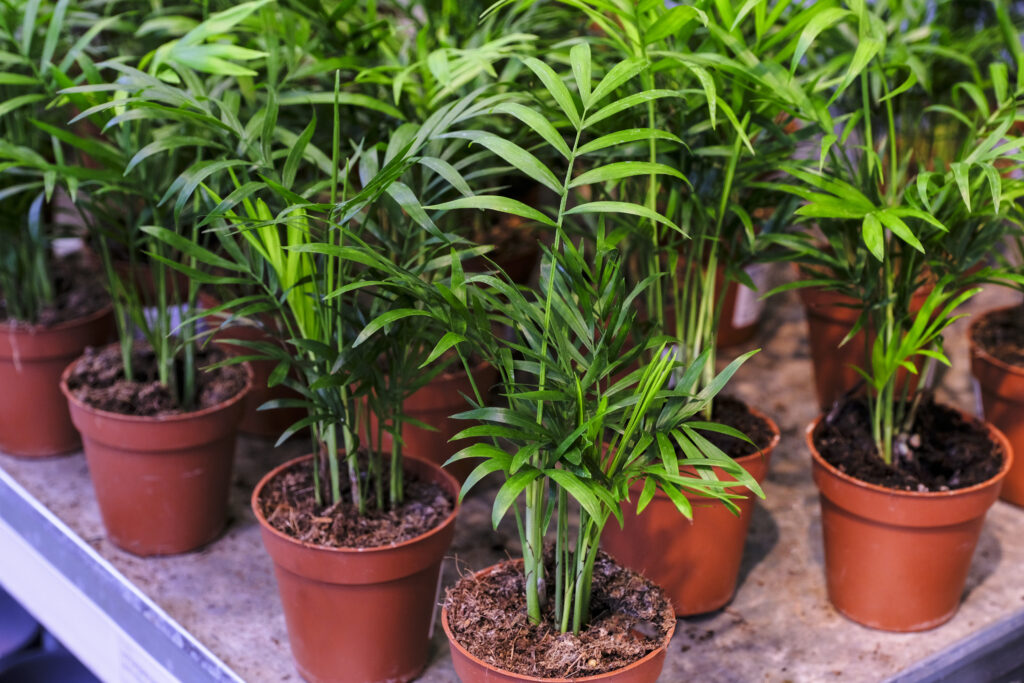
Parlor palms thrive as container plants.
©iStock.com/Olga Ostapenko
Parlor palms (also known as “Neanthe Bella palms”) thrive in an average sunlit room. Typical household temperatures and humidity are also just fine with this indoor palm. The parlor palm needs consistently moist (but not waterlogged) soil.
In its native habitat, this palm may grow 14-16 feet tall, but heights of three to six feet with a spread of two to three feet are the norm when grown in containers. The parlor palm is also a very slow-growing palm. It will take several years to reach its full height.
Little, if any, pruning is needed. However, the fronds are often used in cut arrangements and other decorations such as wreaths. They are also popular in Christian celebrations of Palm Sunday. Parlor palm fronds can remain green for over a month after being cut.

Parlor palm fonds like this one are often used in cut arrangements.
©iStock.com/ELENA PETRUNEVA
The parlor palm is non-toxic to dogs and cats. When grown outdoors in warmer hardiness zones, the palm will produce sprays of tiny yellow flowers, followed by black fruits. It is highly unlikely the palm will flower when grown indoors, though.
The parlor palm is among the very best choices for palm aficionados in cold climates such as Maine. This low-maintenance little palm can bring a touch of the tropics to any home.
Areca Palm (Dypsis lutescens)
This palm is native to Madagascar and has a bamboo-like appearance (it is sometimes known as the “bamboo palm”). The lush green fronds are large with a slight curve.
When grown outdoors, the areca palm can reach heights of 30 feet with a 20-foot spread. When grown indoors, a height of seven to eight feet is expected.
This palm needs moderate moisture to thrive. It can tolerate lower light conditions, but this is definitely a palm to take outside on a warm, sunny day. Just remember that temperatures under 50°F can damage the areca palm tree.
This palm may also be sold under common names such as butterfly palm, golden cane palm, and yellow palm. It is non-toxic for pets.
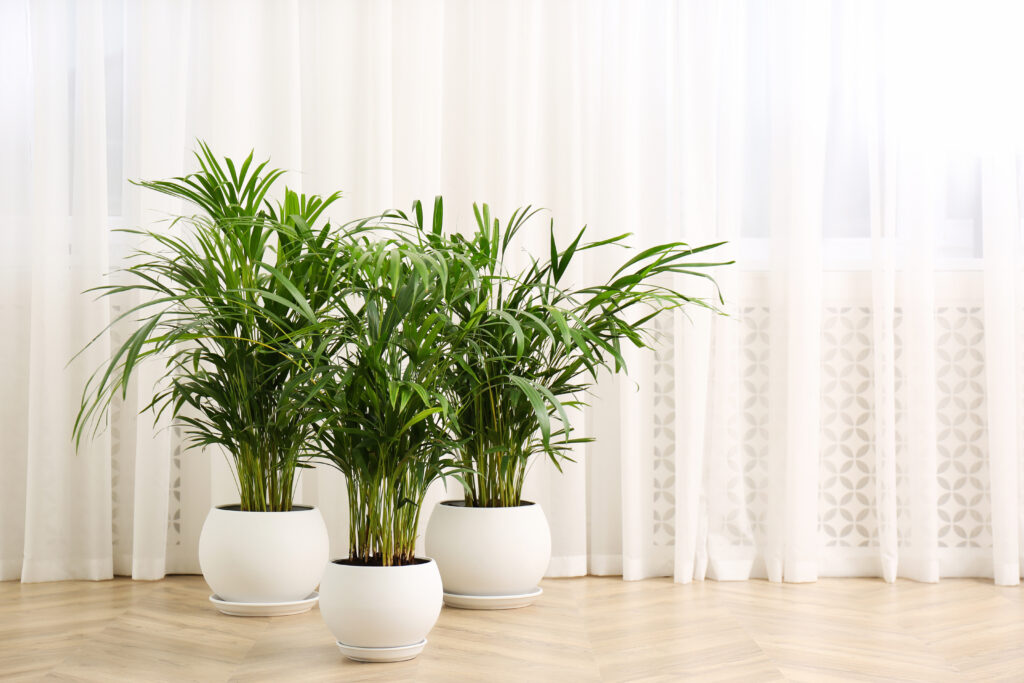
The fronds of the areca palm grow long with a gentle downward curve.
©iStock.com/Liudmila Chernetska
Cascade Palm (Chamaedorea cataractarum)
The cascade palm (also known as the cat palm) is native to the jungles of Central America. However, due to its short growth, it is an understory palm meaning it thrives in lower light conditions. In fact, direct sunlight can burn the fronds.
Many palms have a central trunk, but the cascade palm is trunkless. Instead of a single trunk, it features clumps of fronds. If you’re looking for a palm to propagate, this is the one. Once mature, you can separate the fronds and propagate the palm through division.
In the wild, these palms often grow near water sources. They require more moisture than some other popular indoor palms. Water the palm consistently, but also completely douse the leaves with water a couple of times per week. This palm needs increased humidity to thrive, so dousing the entire plant is especially important during the winter when your heat source dries out the air in your home. Cascade palms are non-toxic.

The cascade palm is great for indoor growing since it thrives in lower light conditions.
©iStock.com/hongquang09
Sago Palm (Cycas revoluta)
This one bends the rules a bit because, despite its name, the sago palm is not a true palm. Rather, it is a cycad. Cycads are among the oldest plants in the world, dating back to the time of the dinosaurs. These plants remain almost unchanged from those prehistoric times.
But, while the sago palm is not a true palm, it is an amazing plant that is sure to bring the same palm-like vibe to your home. The sago palm is native to the warm regions of Japan and China.
Sago palms can grow up to ten feet tall, but the maximum height is almost guaranteed to be shorter when grown in a container. Also, the sago palm’s growth is almost painfully slow. It may take as long as 100 years for a sago palm to reach its full height!
The sago palm is also known as the Japanese sago palm, king sago palm, and sago cycas. Since it is not a true palm, there are some differences from the palms listed above. The most important difference is that, unlike the true palms discussed earlier, the sago palm is highly toxic to both people and pets. Give careful thought to placement if you have pets or small children.
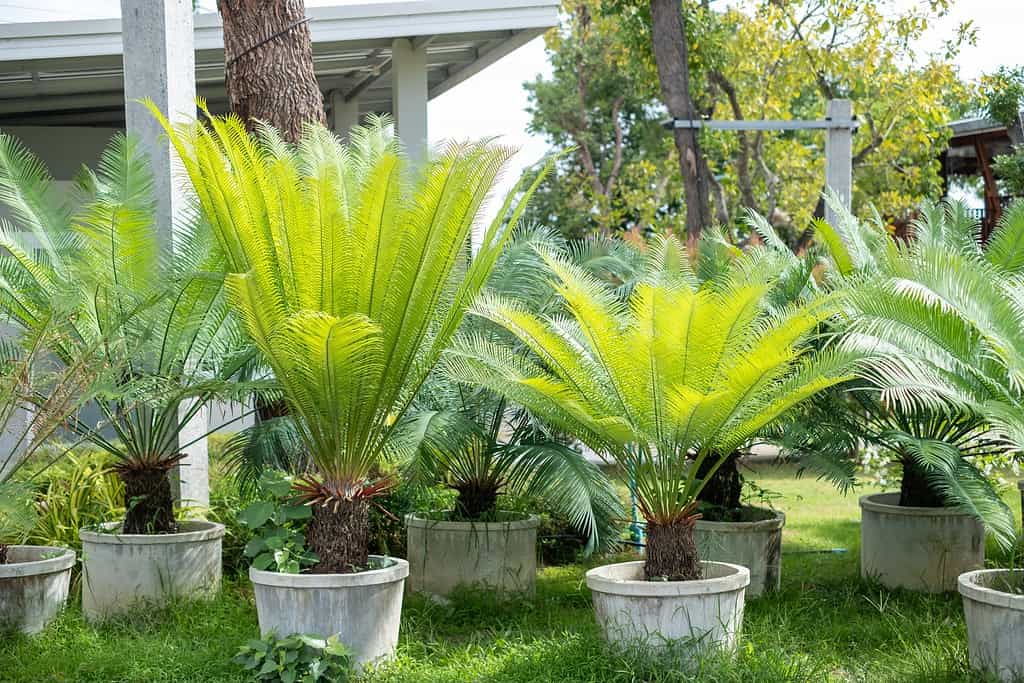
Sago palm trees thrive in containers that can be moved outside on warm, sunny days.
©ISEN STOCKER/Shutterstock.com
Tips for Growing Indoor Palms
Many palms benefit from regular feeding. Fertilizing from spring to fall will help your palm thrive. Choose a high-quality fertilizer (organic if possible). The heavy salts in cheaper fertilizers can damage the roots and possibly kill the palm tree.
Do not place palms in the direct drafts of air conditioning. The cold air can make the branches and fronds brittle or otherwise damage the palm.
As noted in the above descriptions, most palms need consistent moisture. Use a container with adequate drainage holes and keep the soil moist.
Don’t be quick to cut away brown fronds or branches. It may not be aesthetically pleasing, but the palm funnels nutrients from those brown parts to its thriving green branches and fronds. Only cut away parts of the palm that are clearly dead.
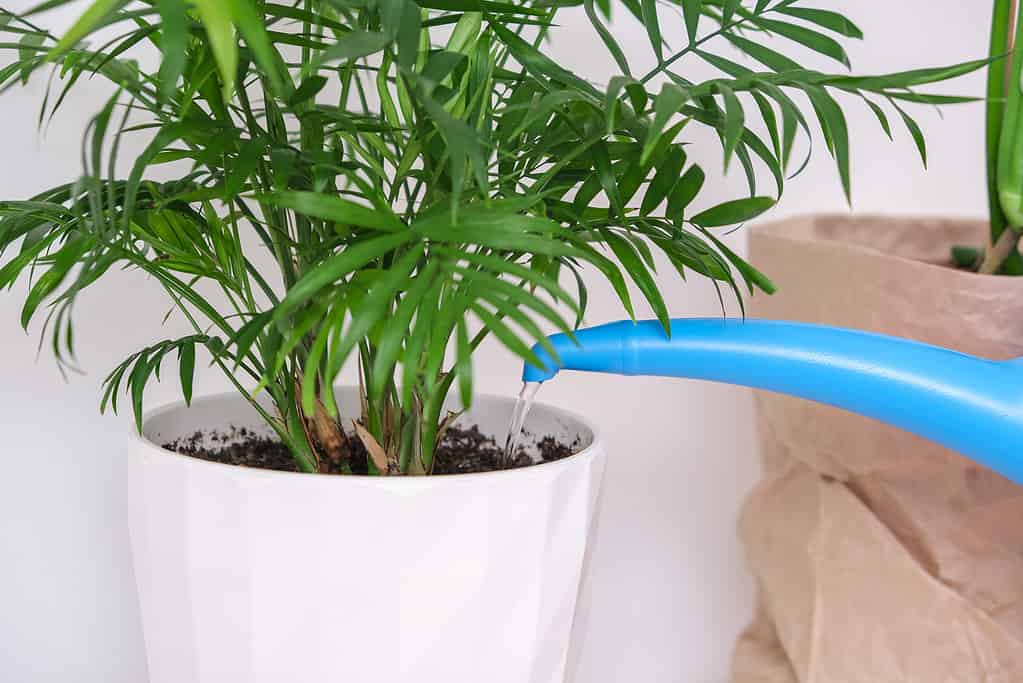
Most indoor and outdoor palms need consistent moisture to thrive.
©iStock.com/Detry26
Thank you for reading! Have some feedback for us? Contact the AZ Animals editorial team.

